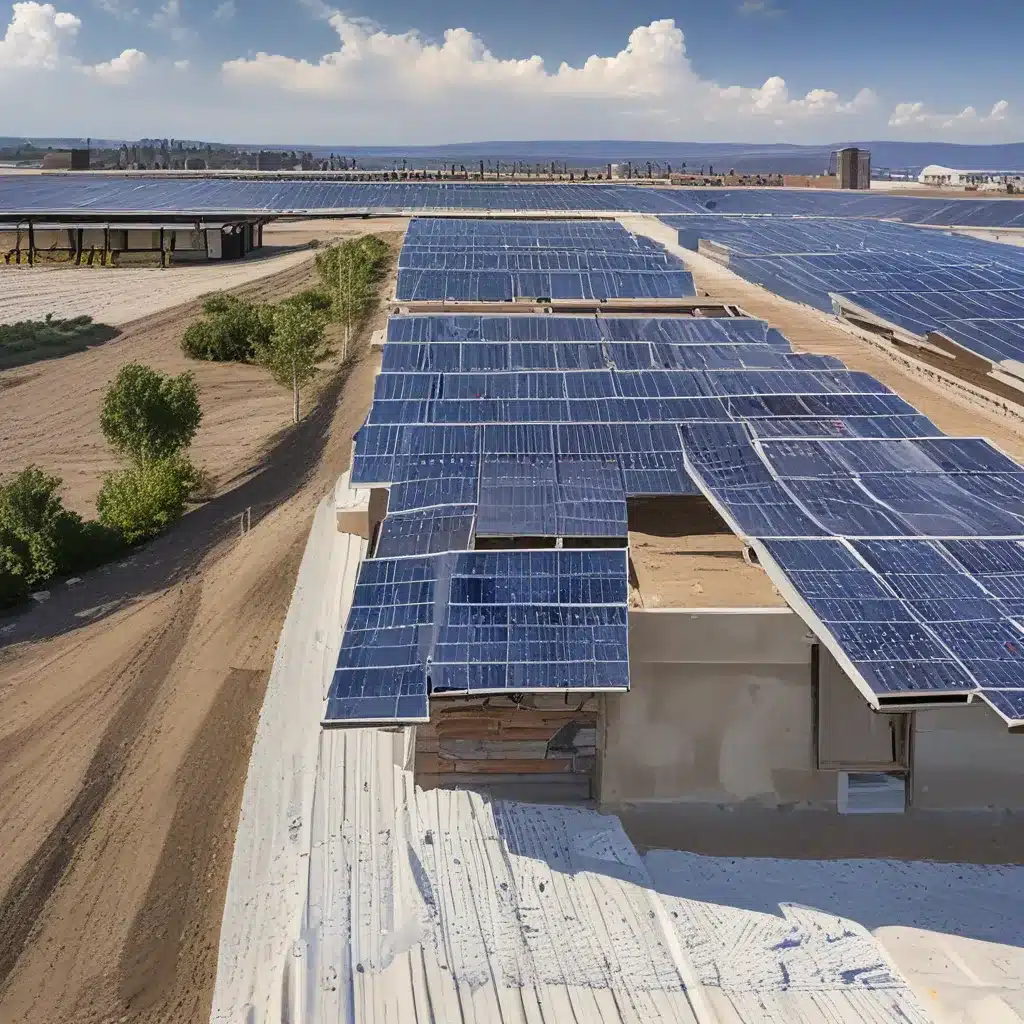
The Sun-Powered Adventure Awaits
As an entrepreneur, you’re always on the lookout for ways to optimize your business operations and boost your bottom line. Well, my friend, have I got the solution for you – solar power! Now, I know what you’re thinking: “Solar? That sounds expensive and complicated.” But trust me, the potential savings you could unlock by harnessing the power of the sun are nothing short of mind-blowing.
Let’s dive in and explore how you can calculate the potential solar savings for your business. Get ready to see those energy bills shrink and your profits soar!
Understanding the Solar Savings Equation
The first step in calculating your potential solar savings is to understand the key factors that play into the equation. It’s kind of like solving a puzzle, but with the added benefit of saving you a ton of money in the long run.
Electricity Consumption: The Energy Appetite
The foundation of your solar savings calculation starts with your current electricity usage. According to the U.S. Department of Energy, the average American household uses around 10,791 kilowatt-hours (kWh) of electricity annually. But as a business owner, your energy needs are likely much more substantial.
Take a look at your recent electricity bills and tally up your total annual consumption. This will be a crucial data point in determining the size of the solar system you’ll need and, ultimately, the potential savings you could unlock.
Electricity Rates: The Cost of Power
Next, you’ll need to factor in your current electricity rates. The EnergySage data shows that the national average electricity rate is around $0.17 per kWh. But your local rates might be higher or lower, depending on your location and utility provider.
Knowing your current electricity rates will help you calculate the savings you could achieve by generating your own solar power and reducing your reliance on the grid.
Solar System Size: Harnessing the Sun’s Potential
The size of the solar system you install will also play a big role in your potential savings. The Department of Energy estimates that the average residential solar system is around 6 kilowatts (kW), but commercial and industrial systems can be much larger, often reaching 100 kW or more.
The size of your system will depend on your energy needs, the available roof space, and other factors. But don’t worry, there are plenty of online tools and solar experts who can help you determine the optimal system size for your business.
Incentives and Rebates: Unlocking Extra Savings
Now, the fun part: incentives and rebates! Federal, state, and local governments often offer various programs to encourage businesses to go solar. These can include tax credits, cash rebates, and performance-based incentives that can significantly reduce the upfront cost of your solar system.
The Google Sunroof tool is a great resource for exploring the solar incentives available in your area. By taking advantage of these savings opportunities, you can maximize the return on your solar investment.
Crunching the Numbers: Calculating Your Potential Savings
Alright, now that we’ve covered the key components, let’s put it all together and crunch the numbers. Grab a calculator and let’s get to work!
Step 1: Estimate Your Annual Electricity Costs
Let’s say your business currently consumes 50,000 kWh of electricity per year and your average electricity rate is $0.20 per kWh. That means your annual electricity costs are:
50,000 kWh x $0.20 per kWh = $10,000
Step 2: Determine Your Solar System Size
Based on your energy needs and available roof space, you decide to install a 50 kW solar system. This system will be able to offset a significant portion of your electricity consumption.
Step 3: Factor in Incentives and Rebates
Your business is located in a state with a generous solar incentive program. After taking advantage of the available tax credits and rebates, you’re able to reduce the upfront cost of your solar system by 30%.
Step 4: Calculate the Lifetime Savings
The EnergySage data shows that the average American household can save around $46,000 over the 25-year lifetime of their solar panel system. Of course, your actual savings will depend on your location, electricity rates, and the size of your solar system.
Assuming a 28% annual electricity price increase (the 10-year average) and a 100% offset of your electricity needs, your business could potentially save:
- $10,000 in annual electricity costs
- $70,000 in total savings over the 25-year lifetime of the solar system (after accounting for the 30% incentive reduction in upfront costs)
That’s a pretty impressive return on investment, don’t you think?
The Solar Savings Advantage
As you can see, the potential solar savings for your business can be substantial. By harnessing the power of the sun, you can not only reduce your energy costs but also insulate your business from the constant fluctuations in electricity rates.
But the benefits of going solar extend far beyond just the financial savings. When you install a solar system, you’re also doing your part to reduce your carbon footprint and contribute to a more sustainable future. And let’s be honest, who doesn’t love the bragging rights of being an eco-conscious business owner?
So, what are you waiting for? Head on over to Solar A Systems Inc. and start your journey towards a brighter, more profitable future. The sun is shining, and the savings are just waiting to be unlocked. Let’s do this!


